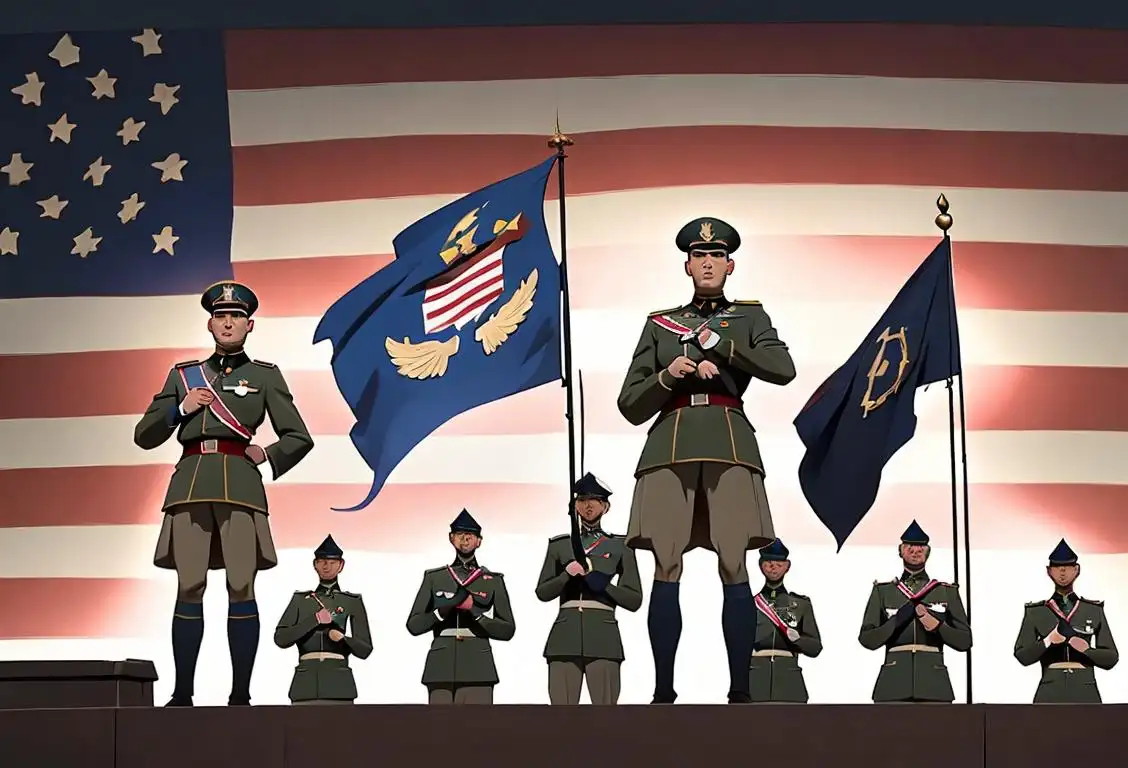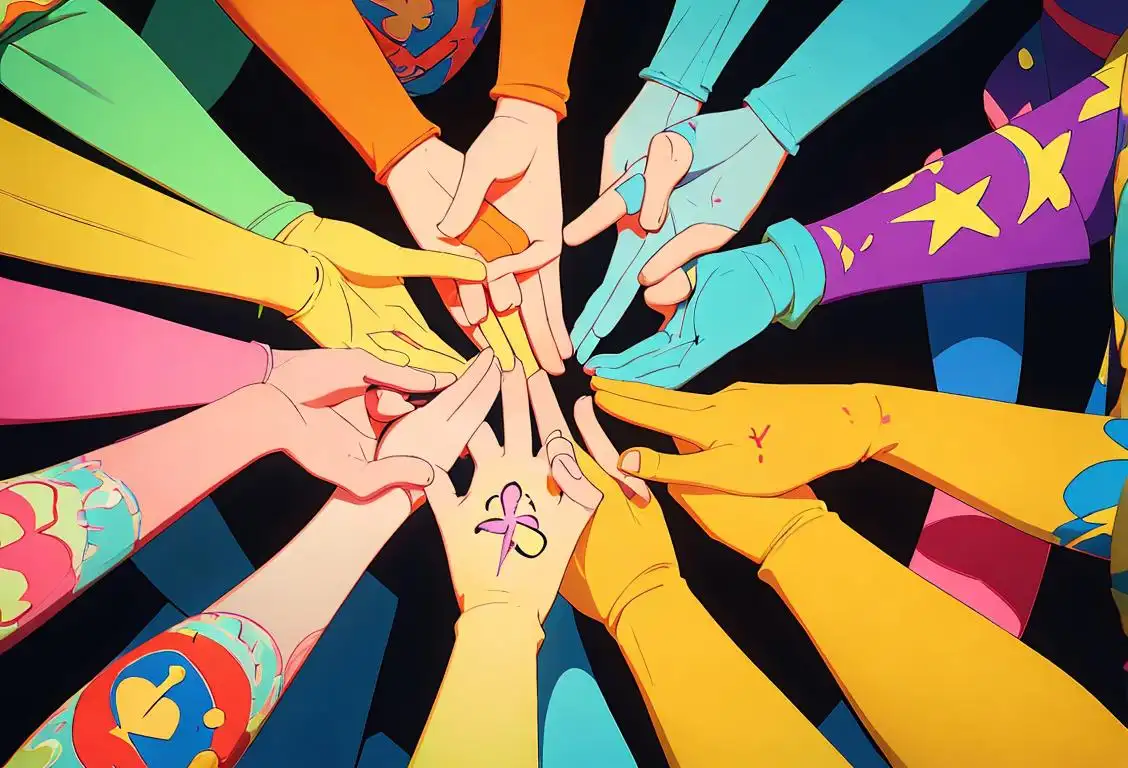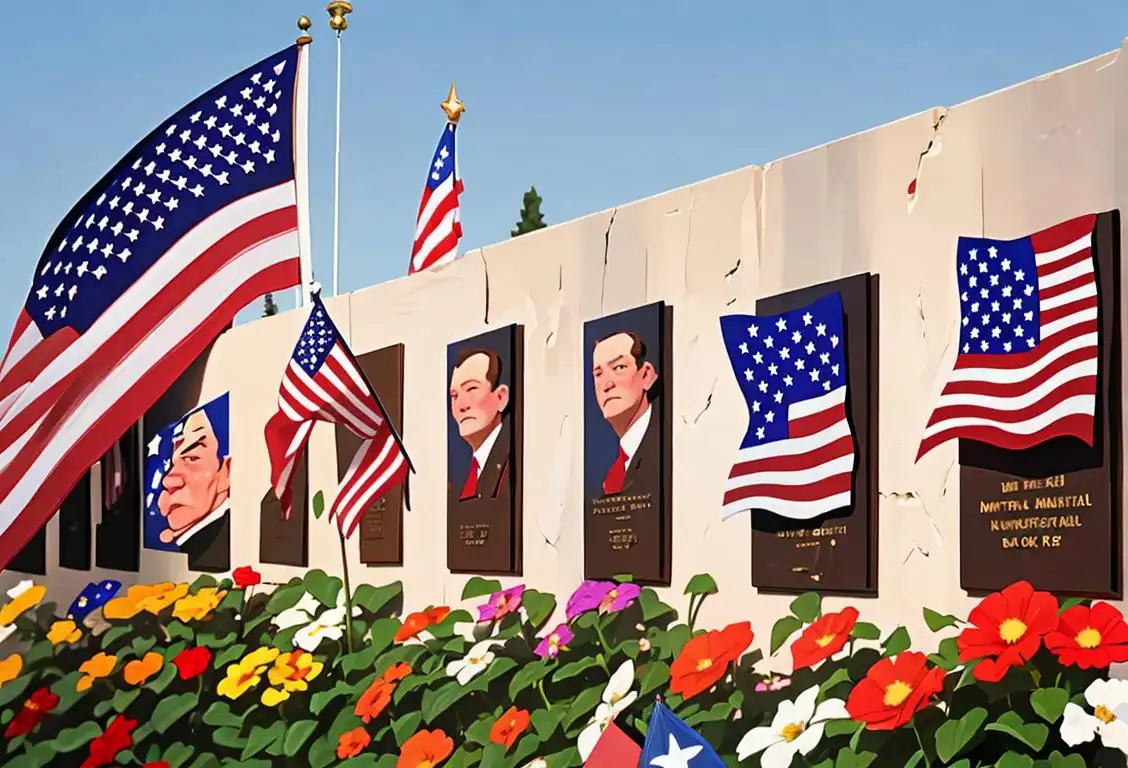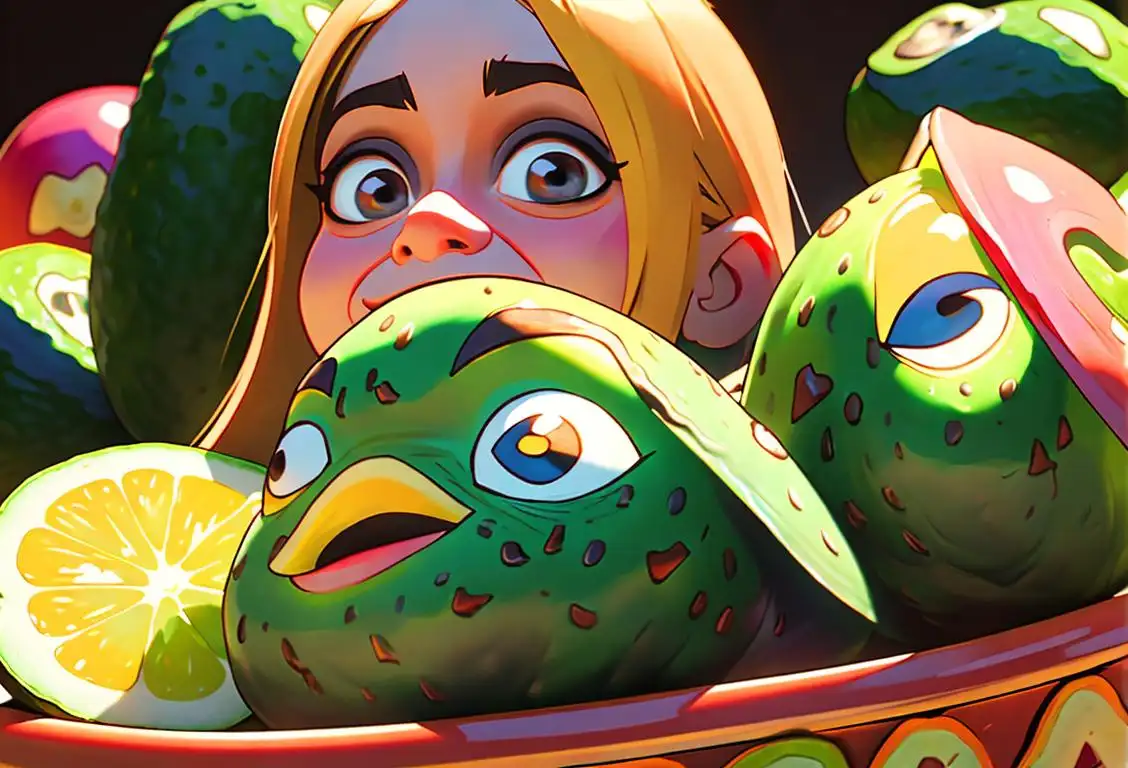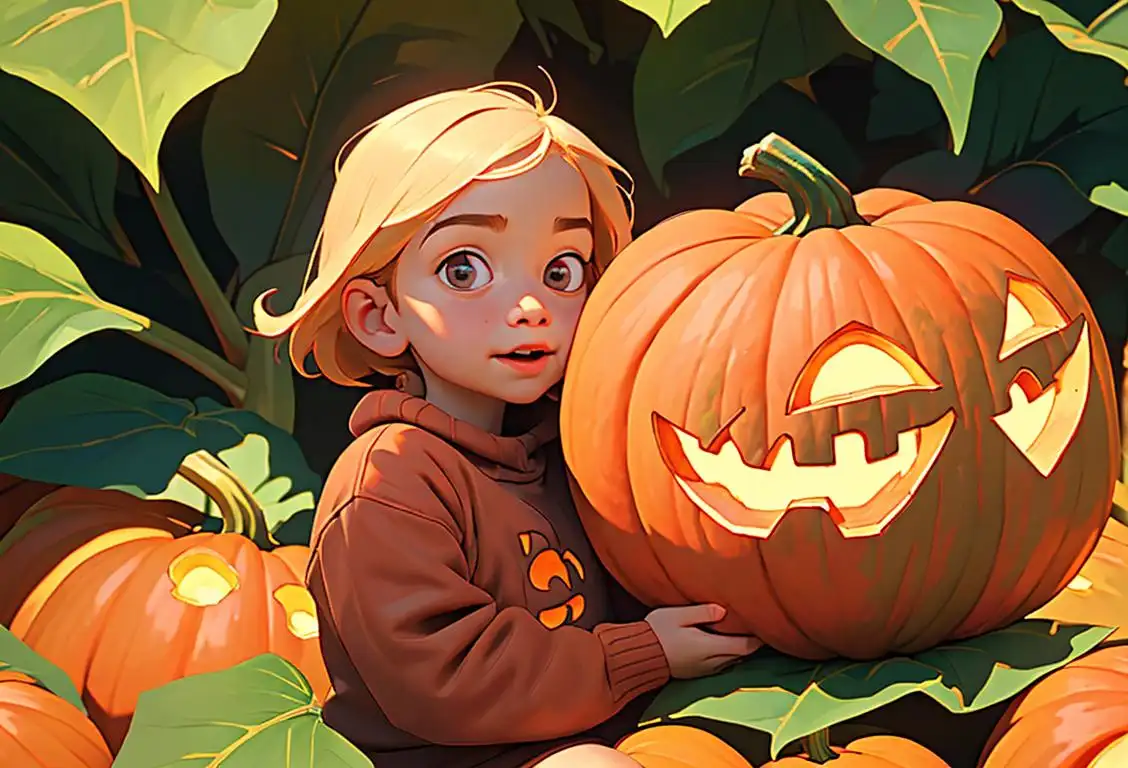National Comedian Day
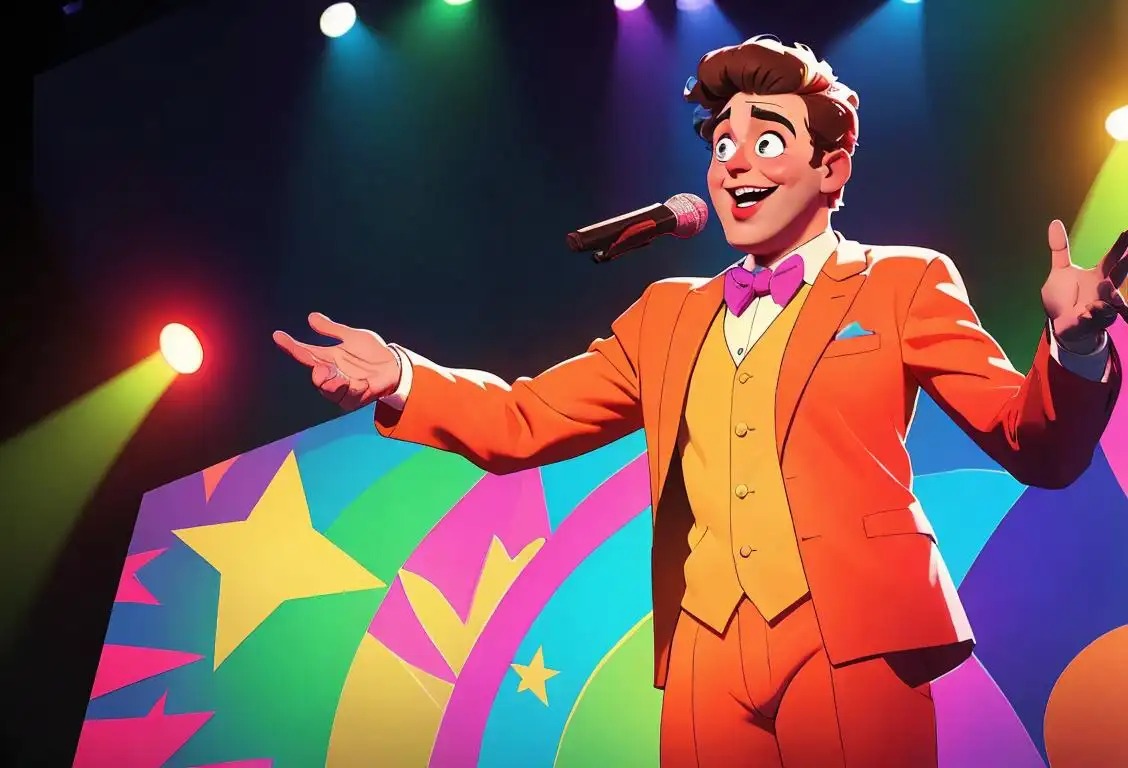
Welcome to the hilarious world of National Comedian Day!
When is Comedian Day?
It's national comedian day on the 1st April.
The Birth of National Comedian Day
Every April 1st, we celebrate National Comedian Day, a day dedicated to honoring the talented individuals who bring joy and laughter to our lives. Whether it's through stand-up comedy, sitcoms, or funny internet videos, comedians have a special knack for making us crack up.
The origins of this delightful day can be traced back to the internet, where it all began. The first mention of National Comedian Day surfaced online on April 1, 2016, causing a wave of excitement among comedy enthusiasts. Since then, it has become an annual tradition to pay tribute to the comedic geniuses who brighten our days.
Why We Love Comedians
Comedians have a unique ability to see the humor in everyday situations and transform them into comedy gold. They serve as our comedic relief, helping us forget our worries, even if just for a moment.
Through their jokes and funny observations, comedians provide a necessary escape from the serious realities of life. They invite us to laugh at ourselves and remind us not to take things too seriously. Whether we're watching a live comedy show or streaming a comedian's special on Netflix, their performances have a way of lifting our spirits and spreading joy.
Comedians come in all shapes and sizes, from the quick-witted stand-up comics who command the stage to the hilarious actors who grace our screens. Each comedian has their own unique style and method of making us laugh, and we can't get enough of it.
How to Celebrate National Comedian Day
On National Comedian Day, it's time to indulge in some comedy goodness. Here are a few fun ways to celebrate:
- Watch a comedy special: Turn on your favorite streaming platform and enjoy a hilarious stand-up special from one of your favorite comedians.
- Support local comedians: Check out comedy clubs or events in your area and see if any comedians are performing live. Grab a few friends and get ready for a night of laughter.
- Share the laughter: Spread joy by sharing your favorite comedy clips or jokes with friends and loved ones. Laughter is contagious, so why keep it to yourself?
Did You Know?
The term 'comedian' originated in ancient Greece, where it referred to actors who performed humorous plays in theaters. These actors were known for their improvisation skills and comedic timing, much like the comedians we know and love today.
History behind the term 'Comedian'
5th century BCE
Ancient Greek Comedic Theater
During the 5th century BCE in ancient Greece, comedic theater emerged as a popular form of entertainment. The term 'comedian' finds its roots in the Greek word 'komodios', which referred to actors who played comedic roles. These actors used satire, physical humor, and humorous dialogue to entertain audiences. Comedic theater was an integral part of Greek culture and influenced the development of comedy in the centuries to come.
400 BCE
The Birth of Satire
During the time of ancient Greece, comedic performances were born out of satirical plays. The Greeks developed the concept of comedy as a form of entertainment that could provide social and political commentary. These early comedians used humor to criticize and poke fun at societal norms, leading the way for future comedic performers.
1580
Etymology of 'comedian'
The term 'comedian' originated from the Latin word 'comoedia', which means 'comedy' or 'comic poetry'. It was derived from the Greek words 'komos', meaning 'revel' or 'celebration', and 'aoidos', meaning 'singer'. In the early usage, a comedian was primarily associated with humorous stage performances.
5th century BC
Theatrical Origins
The term 'comedian' finds its roots in ancient Greece. In the 5th century BC, comedians were part of theatrical performances known as comedies. These performances originally had a religious and festive nature, providing a means of entertainment for the Greek population. Comedians played a crucial role in these comedic plays, often utilizing humor, satire, and witty dialogue to amuse the audience.
5th century BC
Step 1: The Ancient Greek Comedians
The term 'comedian' finds its roots in the ancient Greek theater. In the 5th century BC, there were two main types of plays: tragedies and comedies. The comedies were often humorous and lighthearted, providing relief to the audience after the intense emotions of the tragedies. The actors who performed in comedies were known as 'comoidoi' in Greek, which translates to 'comic poets.' These comic poets were skilled in improvisation and were responsible for entertaining the audience with their funny lines and performances.
1st century BC
Roman Influence
During the time of the Roman Empire, the concept of comedians expanded beyond the Greek theater. Roman comedians, known as 'comoedi,' were performers who specialized in humorous plays. They entertained the Roman masses with their comedic timing, improvisation skills, and physical comedy in various venues, including theaters and public squares.
18th Century
Comedians in theater
During the 18th century, 'comedian' became a common term to describe actors who specialized in comedic roles in theater productions. These actors were skilled at delivering humorous dialogue, physical comedy, and engaging with the audience. Their performances brought laughter and joy to audiences in a time when theater was a significant form of entertainment.
Late Middle Ages
The Jester Tradition
In the late Middle Ages, jesters and fools played an important role in the courts of royalty. These entertainers were often referred to as 'comediants' or 'comic actors'. They amused the nobility with their witty remarks, acrobatics, music, and funny performances. The jester tradition contributed to popularizing comedy and the term 'comedian' as those who brought laughter and entertainment to the court.
16th century
Step 2: The Commedia dell'arte Troupes
During the 16th century in Italy, a form of professional improvisational theater called 'commedia dell'arte' gained popularity. This theatrical style involved traveling troupes of actors who would perform comedic plays with stock characters and improvised dialogue. The performers in these troupes were known as 'comici' in Italian, which translates to 'comics' in English. They often wore distinctive masks and costumes to portray their respective characters and entertained audiences across Europe with their witty performances.
5th Century BCE
The Atellan Farce
In Ancient Rome, a type of improvisational comedy called Atellan Farce gained popularity. This style of comedy involved stock characters, often wearing masks, who would engage in humorous and exaggerated situations. Comedians in the Atellan Farce were known for their quick wit, physical comedy, and ability to entertain the audience with their hilarious performances.
19th Century
Comedians as entertainers
In the 19th century, comedians started to branch out beyond theater and became popular entertainers in various mediums. They performed in vaudeville shows, circuses, and even on early radio programs. With the rise of mass media, comedians gained wider recognition and their performances reached a larger audience.
16th Century
Commedia dell'Arte
During the Renaissance in Italy, Commedia dell'Arte emerged as a popular form of theater. Comedians, known as 'Commedia actors,' were skilled in improvisation and performed in masked or half-masked shows. They had set characters and scenarios, but the dialogue and actions were largely improvised. Commedia dell'Arte greatly influenced the development of comedy and comedic acting in subsequent centuries.
18th century
Step 3: The Emergence of Stand-Up Comedy
In the 18th century, a new form of comedy called 'stand-up comedy' began to evolve. Stand-up comedians would perform solo acts, often delivering funny anecdotes, jokes, and observations directly to the audience. The term 'comedian' started being used to refer to these performers, emphasizing their ability to make people laugh through their spoken words and stage presence. Stand-up comedy became increasingly popular in the following centuries, and 'comedian' became the widely recognized term for a professional comic performer.
18th century
Comedy as a Theatrical Genre
In the 18th century, comedy evolved into a distinct theatrical genre that focused on humorous plots, amusing characters, and comedic timing. The term 'comedian' started being used to describe professional actors who specialized in comedic roles. Comedians honed their skills in delivering jokes, amusing dialogues, and physical comedy to entertain audiences in theaters.
16th century
Commedia dell'arte
In the 16th century, Italy witnessed the rise of 'Commedia dell'arte,' a form of professional improvised theater. Commedia dell'arte troupes traveled throughout Europe, popularizing a wide range of stock characters, each with distinctive traits and comedic routines. The performers were known as 'commedians,' and their ability to captivate audiences with their comedic skills contributed to the spreading of the term.
18th century
Modern Usage
By the 18th century, the term 'comedian' had evolved to describe individuals who made a profession out of entertaining through humor. Comedians performed in various comedy clubs, theaters, and other public gatherings, showcasing their comedic abilities through stand-up comedy, sketches, and plays. Over time, the term became synonymous with the occupation of making people laugh, and it continues to be widely used to refer to professional and amateur humorists alike.
20th century
Rise of Stand-up Comedy
During the 20th century, stand-up comedy gained immense popularity. Stand-up comedians, also known as 'stand-up comics', performed solo acts where they delivered jokes, humorous anecdotes, and observational comedy directly to the audience. The term 'comedian' became synonymous with these performers who used their wit and storytelling abilities to bring laughter to crowds in clubs, theaters, and later through television and other media.
20th century
Step 4: Comedy in Film and Television
With the rise of film and television in the 20th century, the term 'comedian' expanded its reach to include performers in these media as well. Many comedians successfully transitioned their acts from the stage to the screen, entertaining audiences worldwide. Notable comics like Charlie Chaplin, Buster Keaton, Lucille Ball, and many others contributed to the growth of comedy as a popular form of entertainment. The term 'comedian' became synonymous with those who made people laugh across various mediums.
20th Century
The era of stand-up comedy
The 20th century saw a significant shift in the comedy landscape with the emergence of stand-up comedy. Stand-up comedians began to perform in comedy clubs and gained popularity through their own televised specials. They focused on delivering funny stories, observations, and punchlines, often incorporating social commentary. This era witnessed the rise of legendary comedians like Charlie Chaplin, Groucho Marx, and George Carlin.
18th Century
The Rise of Stand-Up Comedy
In the 1700s, stand-up comedy began to take center stage. Comedians started performing solo acts where they would engage the audience through humorous monologues. This shift allowed comedians to have more creative freedom and personal expression. Stand-up comedy became a platform for comedians to showcase their individual comedic styles and connect with the audience on a more personal level.
20th Century
The Birth of Vaudeville and Beyond
Vaudeville, a popular form of variety entertainment, played a significant role in the development of the modern comedian. During the early 1900s, vaudeville stages became platforms for comedians to perform their acts, combining jokes, slapstick comedy, singing, and even magic tricks. This era saw the rise of legendary comedians like Charlie Chaplin, Buster Keaton, and Groucho Marx, whose comedic talents influenced generations to come.
Present day
Diverse comedic styles
In the present day, the term 'comedian' encompasses a wide range of comedic styles and performers. Stand-up comedians continue to thrive, while improv comedians, sketch comedians, and satirists also contribute to the vast comedy landscape. Comedians use their wit, humor, and talents to entertain and often address important social issues, making us laugh while also challenging our perspectives.
Present Day
Comedian in Pop Culture
In the present day, comedians have become integral parts of popular culture. They star in their own sitcoms, perform in comedy clubs and theaters, and even achieve mainstream success in movies and TV shows. Comedians continue to push boundaries, challenge societal norms, and bring laughter to audiences worldwide. The term 'comedian' is now synonymous with individuals who entertain and bring joy through their comedic performances.
Did you know?
Did you know that the world's oldest joke dates back to 1900 BC? It was found on a Sumerian cuneiform tablet and, surprisingly, involved a fart joke. Some jokes truly are timeless!Tagged
fun loved onesFirst identified
1st April 2016Most mentioned on
1st April 2016Total mentions
4Other days
Medal Of Honor Day
Cheese Pizza Day
Foundation Day
Cancer Survivors Day
Suicide Prevention Day
Compliment Day
Memorial Day
Guac Day
Pumpkin Day
Bacon Day
